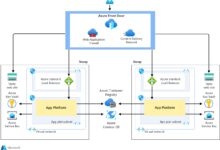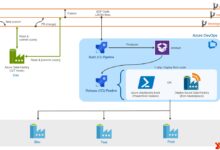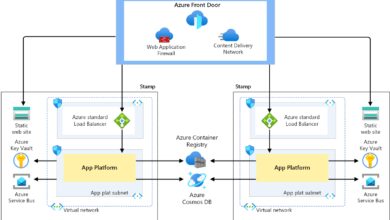Azure Price Cal: 7 Powerful Tips to Master Cloud Cost Management
Managing cloud expenses doesn’t have to feel like navigating a maze. With the right tools, especially the Azure Price Cal, you can gain full control over your Microsoft Azure spending—saving time, reducing waste, and boosting ROI.
Understanding the Azure Price Cal: Your Cloud Budgeting Compass

The Azure Price Cal is more than just a calculator—it’s a strategic tool designed to forecast, analyze, and optimize your cloud infrastructure costs on Microsoft Azure. Whether you’re a startup testing the cloud waters or an enterprise scaling globally, understanding how to use this tool effectively is essential for financial efficiency.
What Exactly Is the Azure Price Cal?
The Azure Price Cal, often referred to as the Azure Pricing Calculator, is an interactive web-based tool provided by Microsoft that allows users to estimate the cost of Azure services before deployment. It enables users to build a virtual environment by selecting specific services—like virtual machines, storage, networking, and databases—and then calculates the projected monthly or annual cost based on usage patterns.
- It’s accessible for free at Microsoft’s official pricing calculator page.
- Users can save, share, and export their estimates as PDFs or CSV files.
- The tool integrates real-time pricing data, including regional variations and reserved instance discounts.
“The Azure Price Cal turns guesswork into precision—transforming cloud cost estimation from a chaotic process into a structured, data-driven strategy.”
Why the Azure Price Cal Stands Out Among Cloud Calculators
While AWS and Google Cloud offer similar tools, the Azure Price Cal excels in integration with Microsoft’s ecosystem, especially for hybrid environments and organizations already using Microsoft 365 or Windows Server. Its seamless connection with Azure Cost Management + Billing adds another layer of post-deployment oversight.
- Real-time pricing updates ensure accuracy.
- Supports granular configurations, including VM tiers, data transfer zones, and SLA levels.
- Offers side-by-side comparisons between pay-as-you-go and reserved instances.
How to Use the Azure Price Cal: A Step-by-Step Guide
Using the Azure Price Cal doesn’t require technical wizardry. With a clear objective in mind—such as estimating the cost of hosting a web application or migrating an on-premise database—you can quickly generate reliable cost projections.
Step 1: Access the Azure Price Cal Platform
Visit https://azure.microsoft.com/en-us/pricing/calculator/ and sign in with your Microsoft account (optional, but recommended for saving projects). Once inside, you’ll see a clean interface with service categories on the left and a summary panel on the right.
- No installation or download is required.
- The tool works across devices, including tablets and smartphones.
- You can start with a blank estimate or choose from pre-built templates like “Web Application” or “Machine Learning”.
Step 2: Build Your Azure Environment
Begin adding services by searching or browsing categories such as Compute, Storage, Networking, Databases, AI + Machine Learning, and more. For example, if you’re deploying a virtual machine:
- Select “Virtual Machines” under Compute.
- Choose your preferred region (e.g., East US, West Europe).
- Pick the VM size (e.g., B2s, D4s v3), operating system (Windows/Linux), and licensing model.
- Adjust settings like availability zones, burstable performance, and managed disks.
Each selection instantly updates the total cost in the summary panel, giving immediate feedback.
Step 3: Refine and Optimize Your Estimate
After adding core services, refine your estimate by adjusting usage assumptions. For instance:
- Set monthly uptime (e.g., 730 hours for 24/7 operation).
- Estimate data transfer volume (inbound is free, outbound costs vary by region).
- Add backup, monitoring (Azure Monitor), and security services (Azure Firewall).
You can also apply reserved instance pricing for 1-year or 3-year terms, which often reduces costs by up to 72% compared to pay-as-you-go.
Key Features of the Azure Price Cal That Maximize Value
The Azure Price Cal isn’t just about slapping numbers together. It’s packed with intelligent features that help businesses forecast accurately, compare options, and avoid budget overruns.
Real-Time Pricing and Regional Cost Variations
One of the most powerful aspects of the Azure Price Cal is its ability to reflect real-time pricing across 60+ Azure regions. Costs for the same VM can vary significantly—sometimes by 30% or more—between regions due to local demand, taxes, and infrastructure costs.
- For example, a D4s v3 VM costs $0.192/hour in North Europe but $0.208/hour in East US.
- This empowers organizations to choose cost-optimal regions without sacrificing performance.
- The tool also factors in data egress fees, which can be a hidden cost in cloud migrations.
Support for Reserved Instances and Savings Plans
The Azure Price Cal allows users to model the financial impact of committing to reserved instances (RIs) or Azure Savings Plans. These are ideal for workloads with predictable usage.
- RIs offer up to 72% savings on VMs when paid annually or triennially.
- Savings Plans provide flexibility by applying discounts across compute usage, even if VM types change.
- The calculator shows both upfront and monthly payment options, helping finance teams plan cash flow.
“By modeling reserved pricing in the Azure Price Cal, one enterprise reduced its annual cloud bill by $280,000 without changing its architecture.”
Export, Share, and Collaborate on Estimates
Team collaboration is built into the Azure Price Cal. You can export your estimate as a PDF or CSV, making it easy to include in proposals, budget reviews, or migration plans.
- Shareable links allow stakeholders to view or edit the estimate without needing an Azure account.
- Integrates with Azure DevOps and Power BI for advanced reporting.
- Supports tagging and naming conventions for large-scale projects.
Common Mistakes to Avoid When Using the Azure Price Cal
Even with a powerful tool like the Azure Price Cal, inaccurate estimates often stem from user error or overlooked details. Avoid these common pitfalls to ensure your forecasts are reliable.
Underestimating Data Transfer and Egress Fees
Many users forget that while inbound data is free, outbound data (egress) is charged—especially when transferring data out of Azure to the internet or between regions.
- Egress costs can range from $0.00 to $0.20 per GB depending on volume and destination.
- Transferring 10 TB/month from East US to the internet could cost over $900/month.
- Always model worst-case egress scenarios in the Azure Price Cal to avoid surprises.
Ignoring Idle or Orphaned Resources
The Azure Price Cal assumes all resources are actively used. However, in real environments, idle VMs, unattached disks, and unused IP addresses can silently inflate bills.
- Use the calculator to model ‘what-if’ scenarios: e.g., what if we shut down non-production VMs at night?
- Pair estimates with Azure Advisor recommendations for cost optimization.
- Factor in auto-shutdown policies to reduce runtime and costs.
Overlooking Hidden Services Like Backup and Monitoring
It’s easy to focus on core services like VMs and storage but forget about operational tools. Azure Backup, Azure Monitor, Log Analytics, and Application Insights all incur costs.
- Azure Backup for a single VM can add $10–$30/month depending on retention.
- Log Analytics charges per GB ingested, which can spike during incidents.
- Always include monitoring and security services in your Azure Price Cal estimate for realism.
Advanced Strategies: Integrating Azure Price Cal With Cost Management Tools
The Azure Price Cal is just the beginning. To achieve true cost governance, integrate it with Azure’s native cost management and third-party tools.
Leveraging Azure Cost Management + Billing
Once your resources are live, Azure Cost Management + Billing provides real-time spend tracking, budget alerts, and cost analysis by department, project, or tag.
- Create budgets with alerts at 50%, 75%, and 100% thresholds.
- Compare actual spend against your Azure Price Cal estimates.
- Use tags to allocate costs across teams or business units.
Link: Azure Cost Management Portal
Using Azure Advisor for Continuous Optimization
Azure Advisor analyzes your live environment and provides personalized recommendations to improve cost efficiency.
- It may suggest downgrading underutilized VMs (e.g., from D4s to D2s).
- Recommends deleting unattached disks or deallocating idle VMs.
- Integrate these findings back into the Azure Price Cal for revised estimates.
Third-Party Tools That Complement the Azure Price Cal
For enterprises needing deeper analytics, tools like CloudHealth by VMware, Spot.io, and Apptio integrate with Azure to provide advanced forecasting, showback/chargeback models, and multi-cloud cost comparisons.
- CloudHealth offers AI-driven anomaly detection and rightsizing.
- Spot.io automates cost-saving actions like spot instance usage.
- These tools can import Azure Price Cal estimates as baselines for comparison.
Real-World Use Cases: How Businesses Use the Azure Price Cal
The Azure Price Cal isn’t just for IT teams—it’s a strategic tool used across departments to justify investments, plan migrations, and control budgets.
Case Study: Migrating an On-Premise ERP System to Azure
A manufacturing company used the Azure Price Cal to estimate the cost of migrating its legacy ERP system. They modeled:
- 10 virtual machines (mix of D and E series).
- 50 TB of premium SSD storage.
- ExpressRoute for secure connectivity.
- Monthly data transfer of 20 TB.
The initial estimate was $28,000/month. By adjusting to reserved instances and optimizing storage tiers, they reduced it to $19,500/month—a 30% savings before deployment.
Startup Scenario: Launching a SaaS Platform
A tech startup used the Azure Price Cal to forecast costs for their new SaaS product. They started small:
- 2 B-series burstable VMs ($15/month each).
- 100 GB of Azure SQL Database.
- Basic Azure Blob Storage and CDN.
Total estimated cost: $350/month. This helped them secure seed funding with a clear financial model. As they scaled, they revisited the Azure Price Cal quarterly to adjust projections.
Enterprise Budget Planning: Annual IT Forecasting
A global bank uses the Azure Price Cal to create annual cloud budgets for 15+ departments. Each team submits their Azure resource plans, which are modeled in the calculator. The central IT team then consolidates estimates, applies enterprise discounts, and negotiates with Microsoft.
- Enables accurate chargeback to business units.
- Identifies cost-saving opportunities early.
- Supports compliance with internal financial controls.
Future Trends: How the Azure Price Cal Is Evolving
Microsoft is continuously enhancing the Azure Price Cal to keep pace with cloud innovation and user demands.
AI-Powered Cost Predictions
Future versions of the Azure Price Cal are expected to integrate AI to predict cost trends based on historical usage, seasonal spikes, and workload patterns.
- Imagine typing “I expect 3x traffic during Black Friday” and getting an instant cost impact analysis.
- AI could recommend optimal VM sizes or auto-suggest reserved instances.
- This would reduce manual input and improve forecast accuracy.
Integration With Carbon Emission Tracking
As sustainability becomes a priority, Microsoft is adding environmental impact metrics to Azure tools. The Azure Price Cal may soon show not just cost, but carbon footprint per workload.
- Helps organizations meet ESG goals.
- Allows comparison of greener regions (e.g., Sweden vs. Virginia).
- Aligns financial and environmental decision-making.
Multi-Cloud Cost Comparison Mode
While currently Azure-only, there are rumors of a future “Compare with AWS/GCP” feature. This would allow side-by-side cost analysis across major cloud providers directly within the Azure Price Cal.
- Would eliminate the need for third-party tools for basic comparisons.
- Could boost Azure adoption by highlighting cost advantages.
- Must remain unbiased to maintain trust.
Best Practices for Maximizing the Azure Price Cal
To get the most value from the Azure Price Cal, follow these proven best practices.
Always Model Multiple Scenarios
Don’t rely on a single estimate. Create multiple scenarios:
- Baseline: Current architecture.
- Optimized: With reserved instances and rightsized resources.
- Peak Load: During high-traffic events.
- Disaster Recovery: Secondary region costs.
This prepares you for uncertainty and supports strategic planning.
Use Tags and Naming Conventions
When building estimates, use consistent tags (e.g., Environment=Production, Project=CRM) to make future cost allocation easier.
- Tags can be exported and used in Azure Cost Management.
- Helps finance teams track spending by project or department.
- Improves accountability and transparency.
Review Estimates Quarterly
Cloud needs change. Revisit your Azure Price Cal estimates every quarter to reflect:
- New services added.
- Changes in user count or data volume.
- Updated pricing or new discount offers.
This keeps your financial model accurate and actionable.
Azure Price Cal vs. Competitors: How Does It Stack Up?
Let’s compare the Azure Price Cal with AWS Pricing Calculator and Google Cloud Pricing Calculator.
User Interface and Ease of Use
The Azure Price Cal wins points for its clean, intuitive interface. Drag-and-drop isn’t available, but the search functionality and category layout make it easy to find services.
- AWS Calculator is powerful but cluttered.
- Google Cloud’s tool is sleek but less detailed in networking costs.
- Azure strikes a balance between depth and usability.
Pricing Accuracy and Transparency
All three tools use real-time pricing, but Azure stands out by clearly showing:
- Differences between standard and premium storage.
- Data transfer costs by destination zone.
- Reserved instance savings with clear payback periods.
AWS sometimes hides egress costs in fine print, while Azure displays them upfront.
Integration With Native Cost Management
Azure has the tightest integration between its pricing calculator and cost management dashboard. You can import estimates as budgets or compare them directly with actual spend.
- AWS requires third-party tools for deep analysis.
- Google Cloud has strong integration but less enterprise-focused reporting.
- Azure’s ecosystem advantage is clear for Microsoft-centric organizations.
What is the Azure Price Cal?
The Azure Price Cal is Microsoft’s official pricing calculator that helps users estimate the cost of Azure cloud services before deployment. It supports detailed configurations, real-time pricing, and exportable reports.
Is the Azure Price Cal free to use?
Yes, the Azure Price Cal is completely free. No account is required to start, though signing in allows you to save and share estimates.
Can I compare Azure costs with AWS or Google Cloud in the Azure Price Cal?
Not directly. The Azure Price Cal only estimates Azure costs. For cross-cloud comparisons, you’ll need to use third-party tools or manually compare results from each provider’s calculator.
How accurate is the Azure Price Cal?
It’s highly accurate for standard configurations, but real-world costs may vary due to unexpected usage, unmonitored resources, or changes in pricing. Always monitor actual spend with Azure Cost Management.
Can I use the Azure Price Cal for reserved instances?
Yes. The Azure Price Cal allows you to model reserved instances and Savings Plans, showing potential savings of up to 72% compared to pay-as-you-go pricing.
Mastering the Azure Price Cal is a game-changer for any organization using Microsoft Azure. It empowers teams to forecast costs with confidence, avoid budget overruns, and optimize cloud spending. From startups to enterprises, this tool is essential for financial control in the cloud era. By combining accurate pre-deployment estimates with ongoing cost management, businesses can achieve maximum ROI from their Azure investments. Start using the Azure Price Cal today to turn cloud cost uncertainty into strategic advantage.
Recommended for you 👇
Further Reading:









